Uncommon Beauties: Unique Shrubs That Deserve More Attention

Five Shrubs You Are Going To Love!
- Trost's Dwarf Cutleaf Birch
- Purpleleaf Bailey Select American Hazelnut
- Black Lace Elderberry
- Royal Purple Smoke Bush/Tree
- Goji Berry
We also have prepared for you a guided tour captured on a beautiful summer day, 2023.
Trost's Dwarf Cutleaf Birch (Zone 2-9), scientifically known as Betula pendula 'Trost's Dwarf,' is a delightful little shrub and, with time, eventually a tree. Its unique features make it an excellent addition to any garden. Let's explore why you might consider growing this charming little birch:
- Elegant Foliage: The green, finely cut, ribbon-like leaves of Trost's Dwarf create a striking texture. These delicate leaves lend an air of elegance to your landscape.
- Hardiness: Trost's Dwarf is hardy in USDA Zones 2-9. It can withstand colder climates, making it suitable for various regions.
- Semi-Weeping Habit: Its overall growth habit is similar to that of a Japanese maple, which adds visual interest and variety to your garden.
- Moisture-Loving: Birch thrives in moist soil but needs to be well drained. Trost's Dwarf will work near water features, where its lacy leaves can catch the light and its unique compact branching habit stays in check.
- Seasonal Beauty: The pale green leaves turn a beautiful golden yellow in autumn. Over time, the tan bark matures into the classic white bark birch appearance—the perfect for plant collectors.
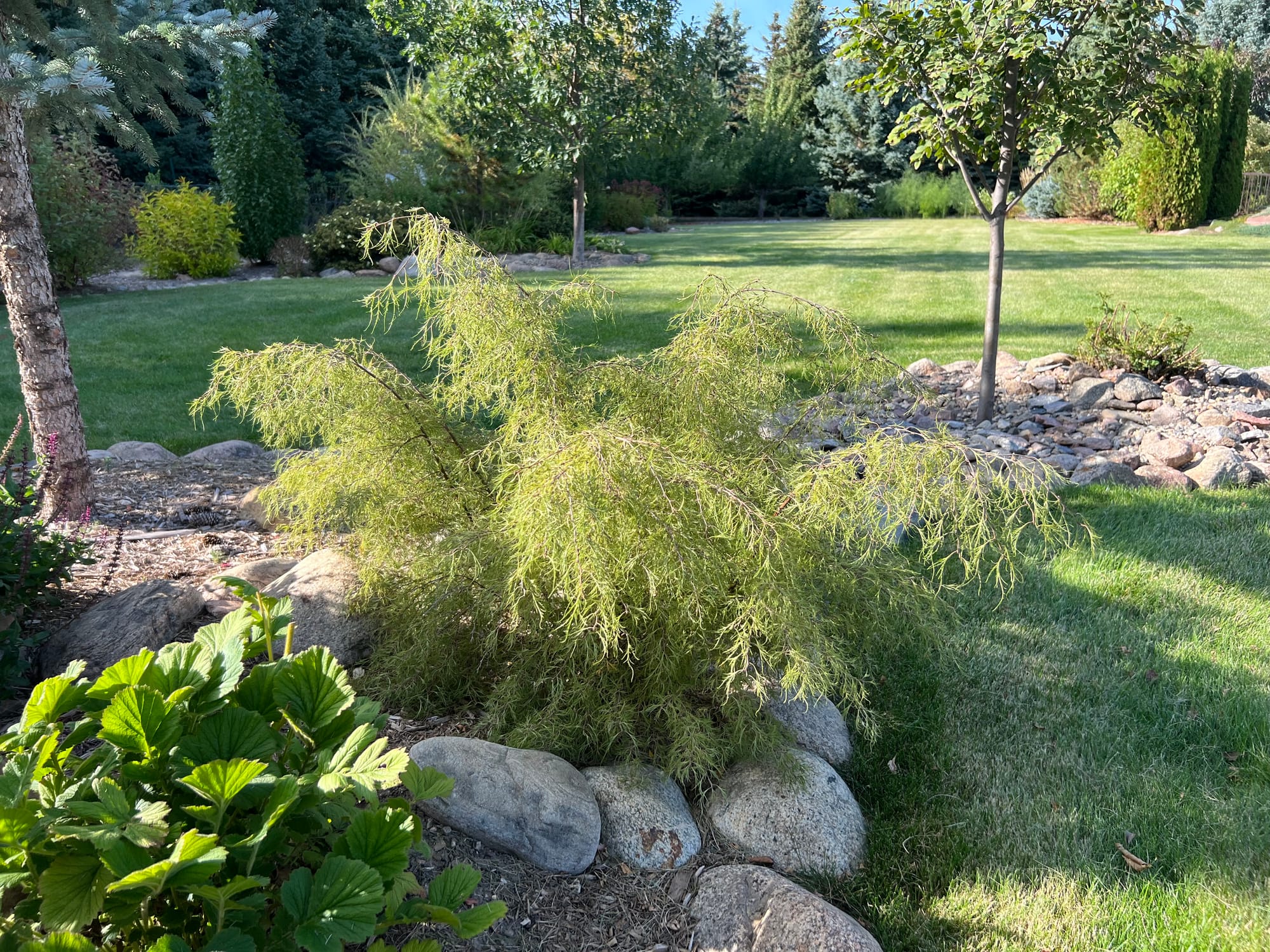
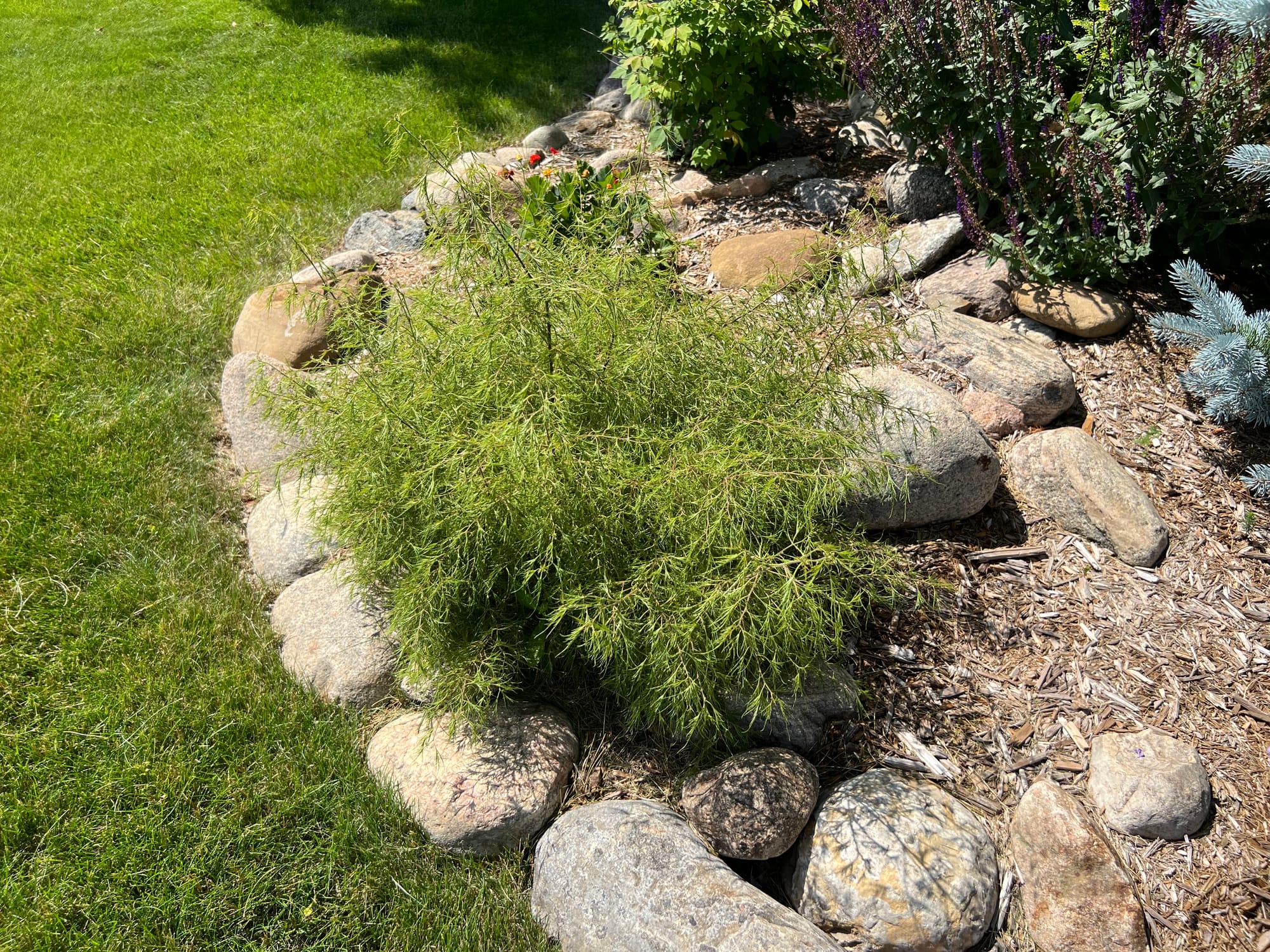
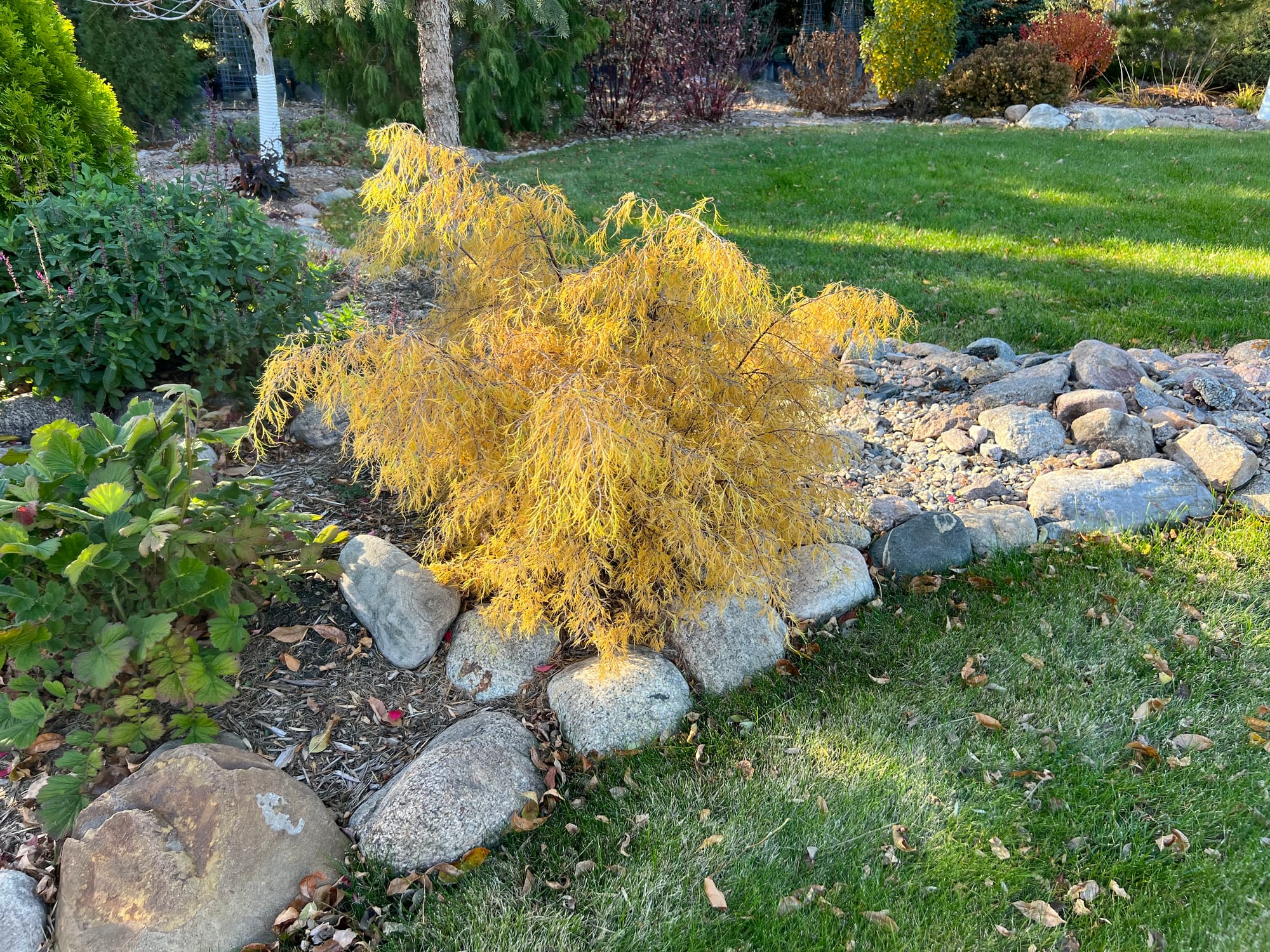
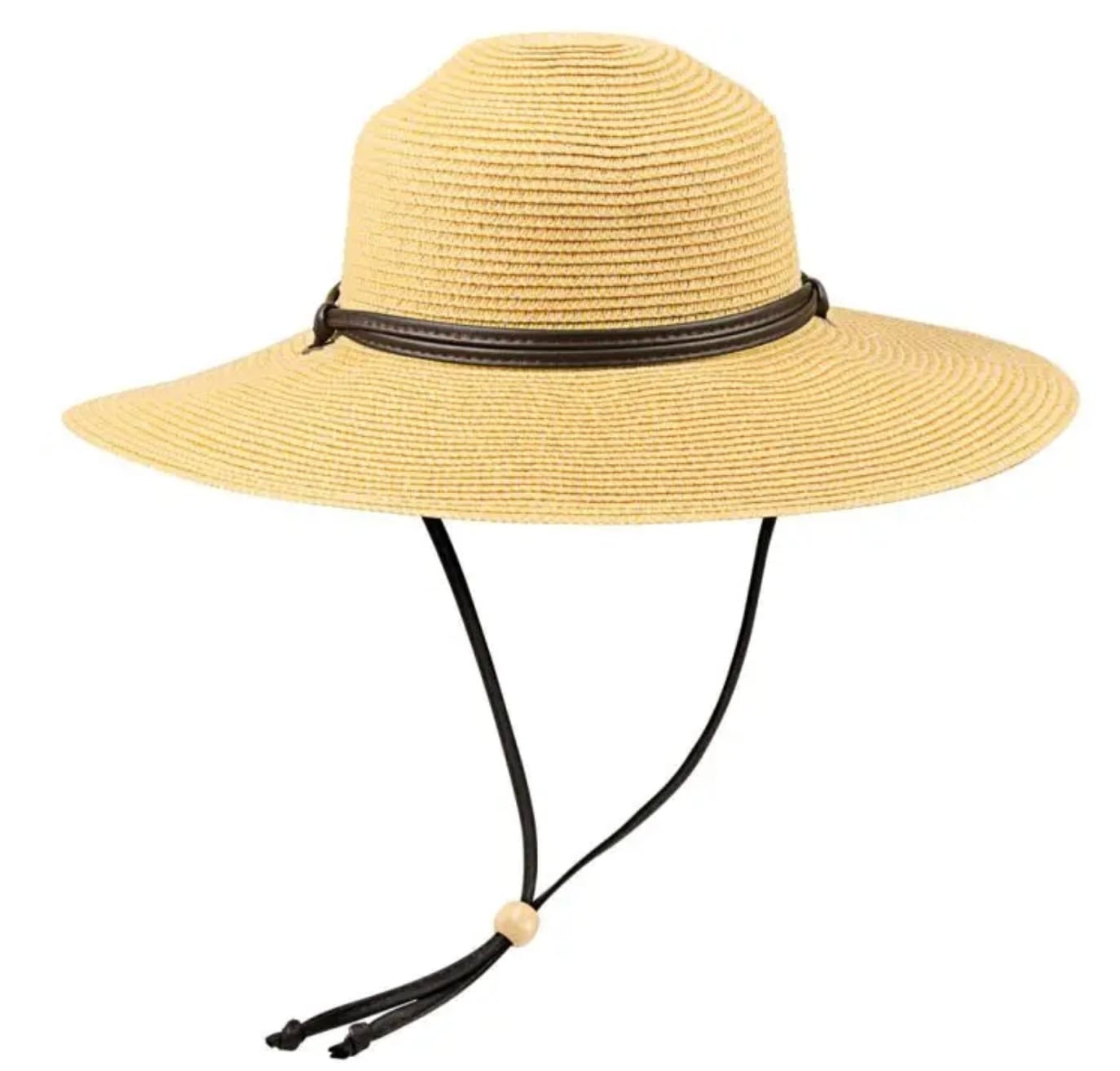
Sloggers Women's Braided Wide Brim Hat, Camel
SPF 50 Sun Protection
Garden Hike is supported by its audience. When you purchase through links on this site, we may earn a small commission at no additional charge to you.
The Purpleleaf Bailey Select American Hazelnut (Zone 2) Corylus americana 'Purpleleaf Bailey Select', is an awesome shrub with several compelling reasons to grow it in your garden:
- Edible Nuts: When the shrub matures, you will begin to see edible nuts that emerge in clusters of two to four and ripen in time for roasting in the fall.
- Eye-Catching Foliage: I call it the contrarian of the shrubs due to its early leaves emerging as a dark burgundy merlot color and then transitioning into shades of green and eventually pinkish-orange-red shades in the fall.
- Award Winner: This shrub earned the Royal Horticultural Society Award of Garden Merit for outstanding qualities and performance.
- Wildlife Habitat: If you're a nature enthusiast, leave the hazelnuts for the various critters for a natural food source.
- Ideal Size: With a mature height and spread of 7 to 8 feet, this deciduous shrub fits well in various garden spaces.
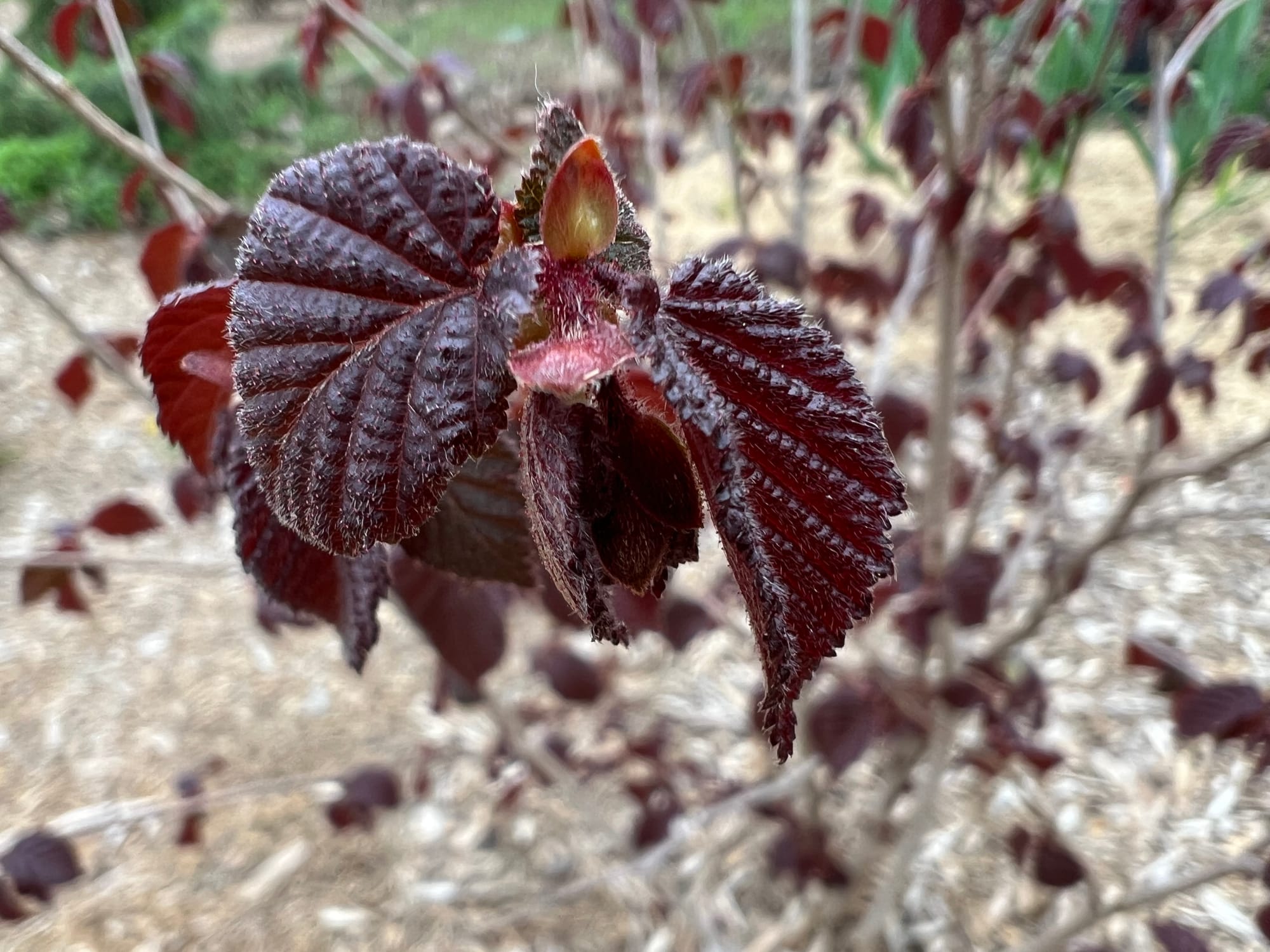
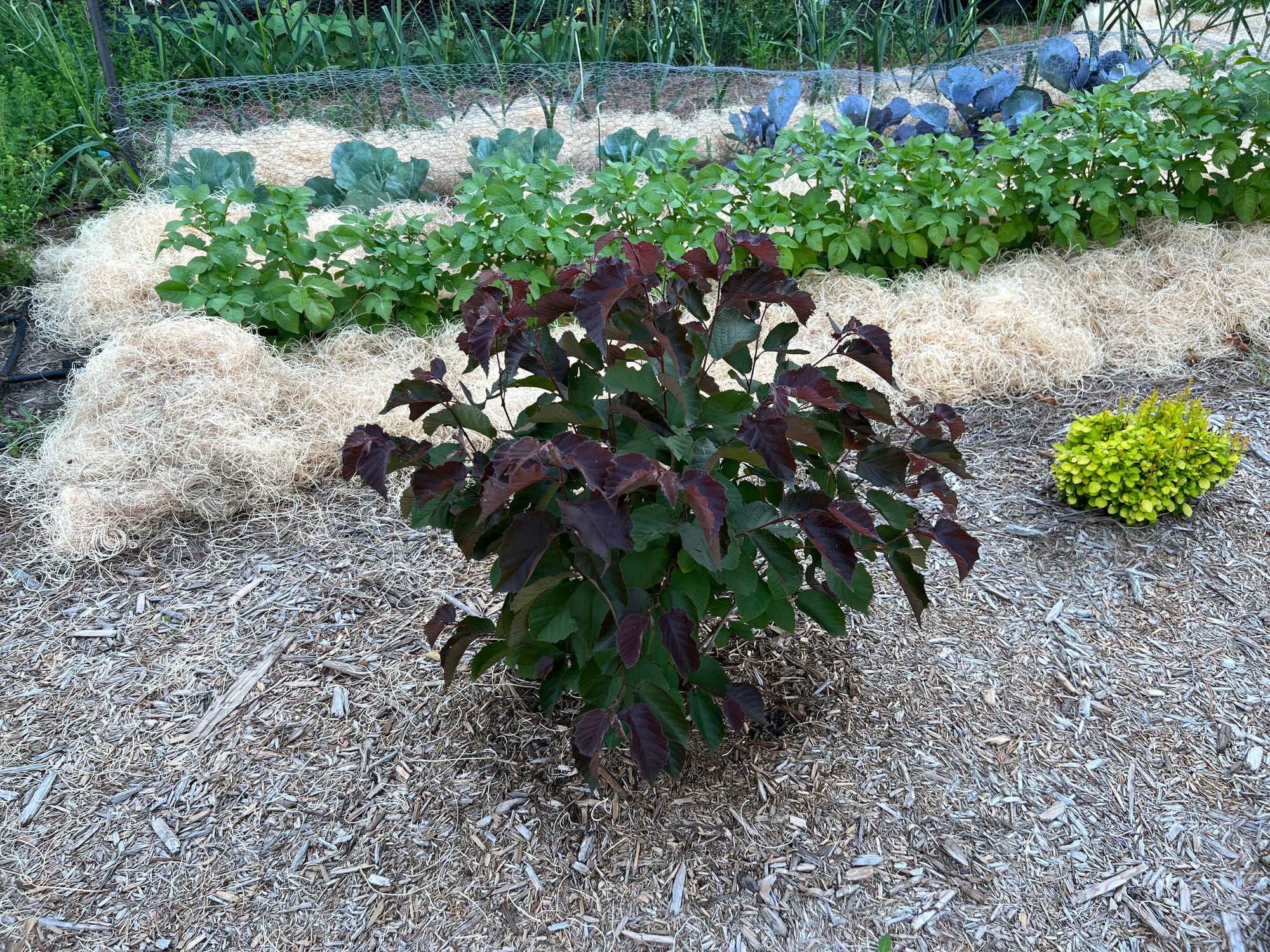
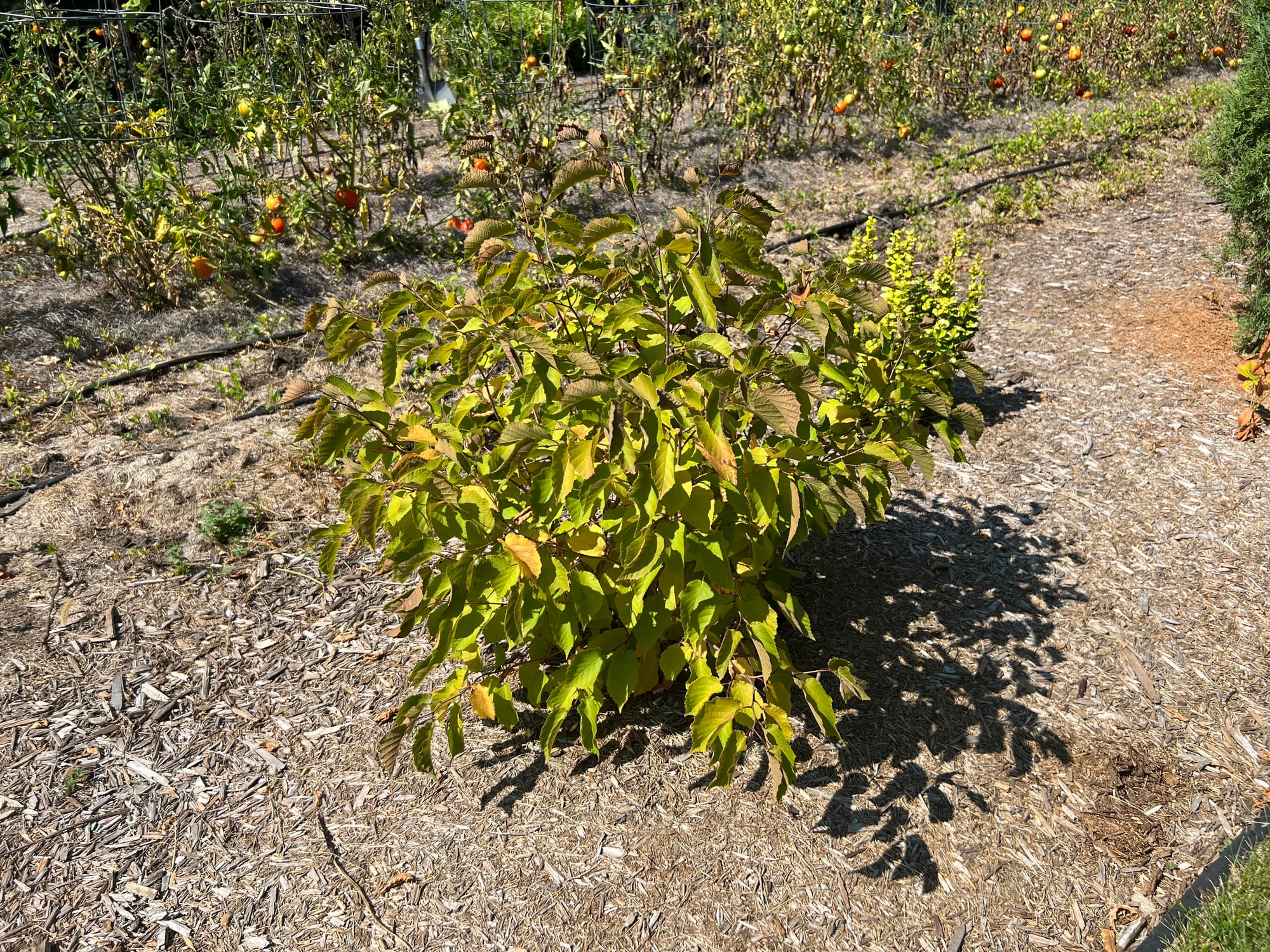
Black Lace Elderberry (Zone 5-7) Sambucus nigra ‘Eva', is a favorite plant with dark purple-black foliage. While not fully hardy to my area (zone 4), that doesn't mean you should shy away from growing it in colder climates; here's why:
- Fast Grower: All Elderberry plants are fast growers, and Black Lace is no exception. My Black Lace dies back to the ground after each winter since it is only hardy to zone 5, which classifies it as a sub-shrub for my area. But due to its fast growth, it will easily reach 4-5' in size in one growing season, showing off its lace foliage similar to the Japanese Maples.
- Showy Flowers: Whitish light-pink flowers appear in flat-topped clusters. The flowers are a stunning contrast against the dark purple foliage. The flowers bloom on old wood, meaning your stems will need to survive through the winter (so I usually do not have the benefit of enjoying the flowers unless the snow has insulated the lower branches). I also forfeit elderberry fruits because of the nonflowering.
- Wet locations: Elderberries thrive in moist locations but will not tolerate overly saturated areas and standing water.
- Containers: Break the rules when putting together your annual flowering pots. I love the look of Black Lace and the golden varieties (shown in the video), when used as an accent in containers.
- Woodland Gardens: Due to the unique growth habit of all Elderberries, they are the perfect plant to use in woodland and rain gardens.
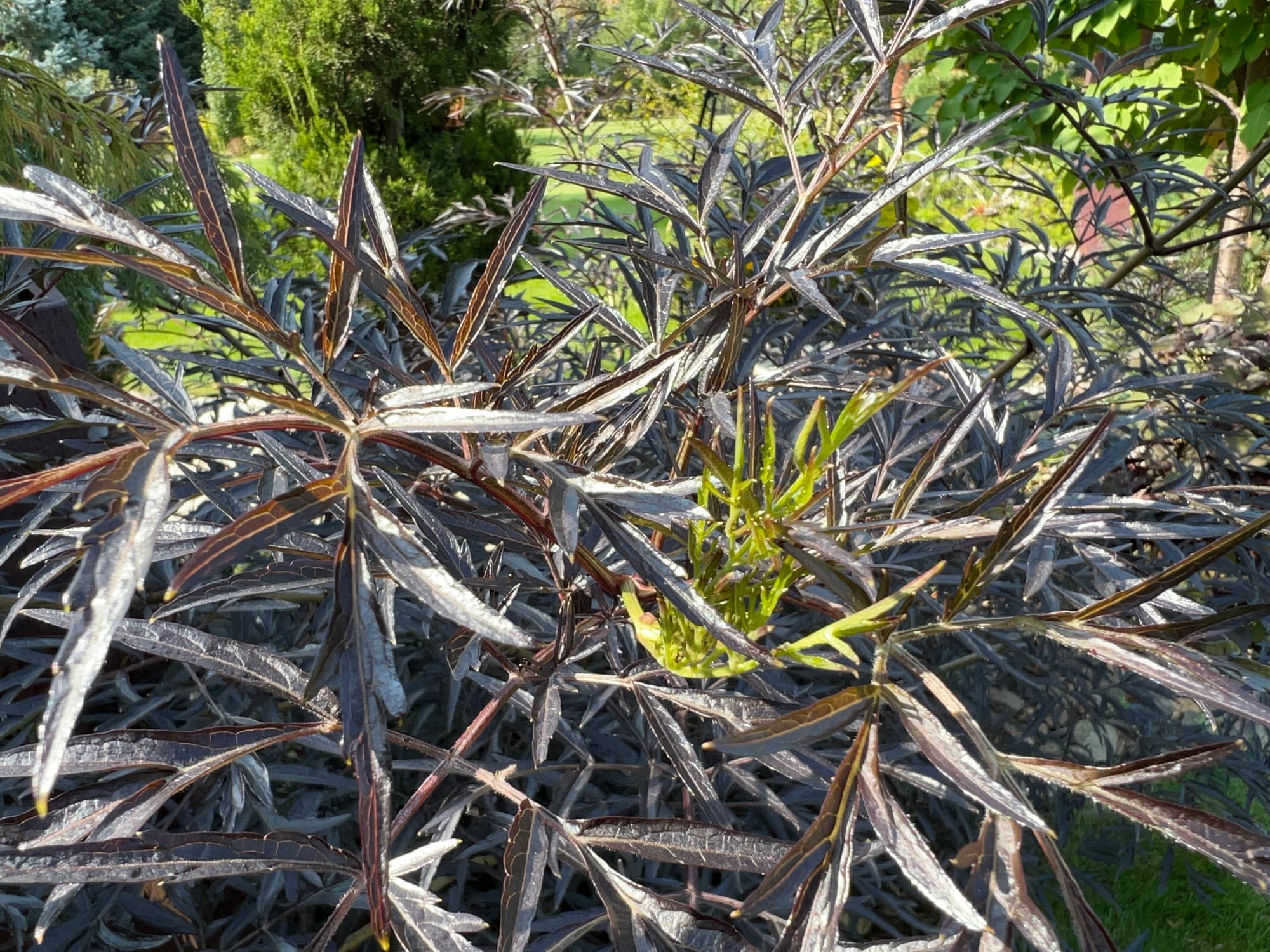
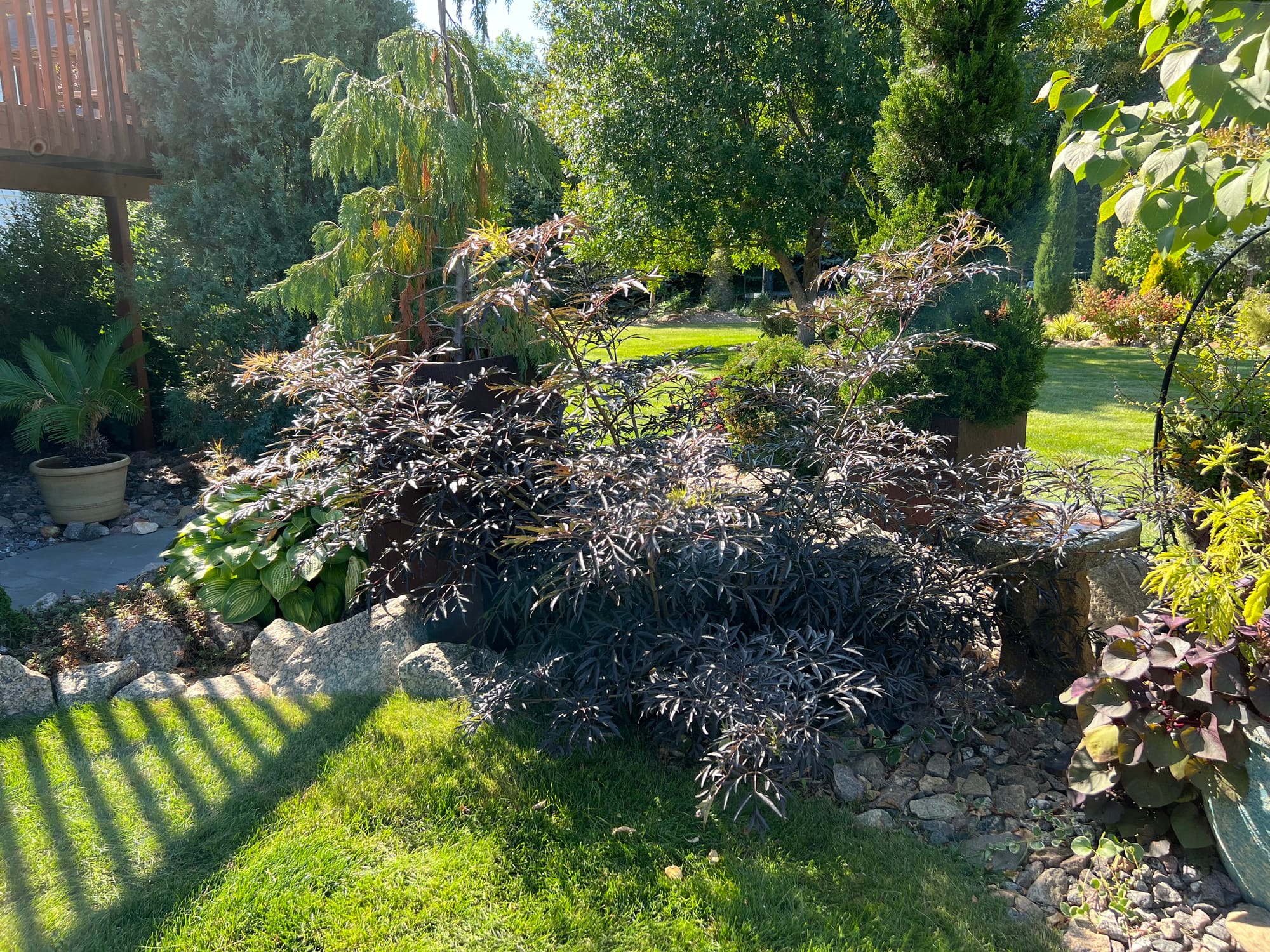
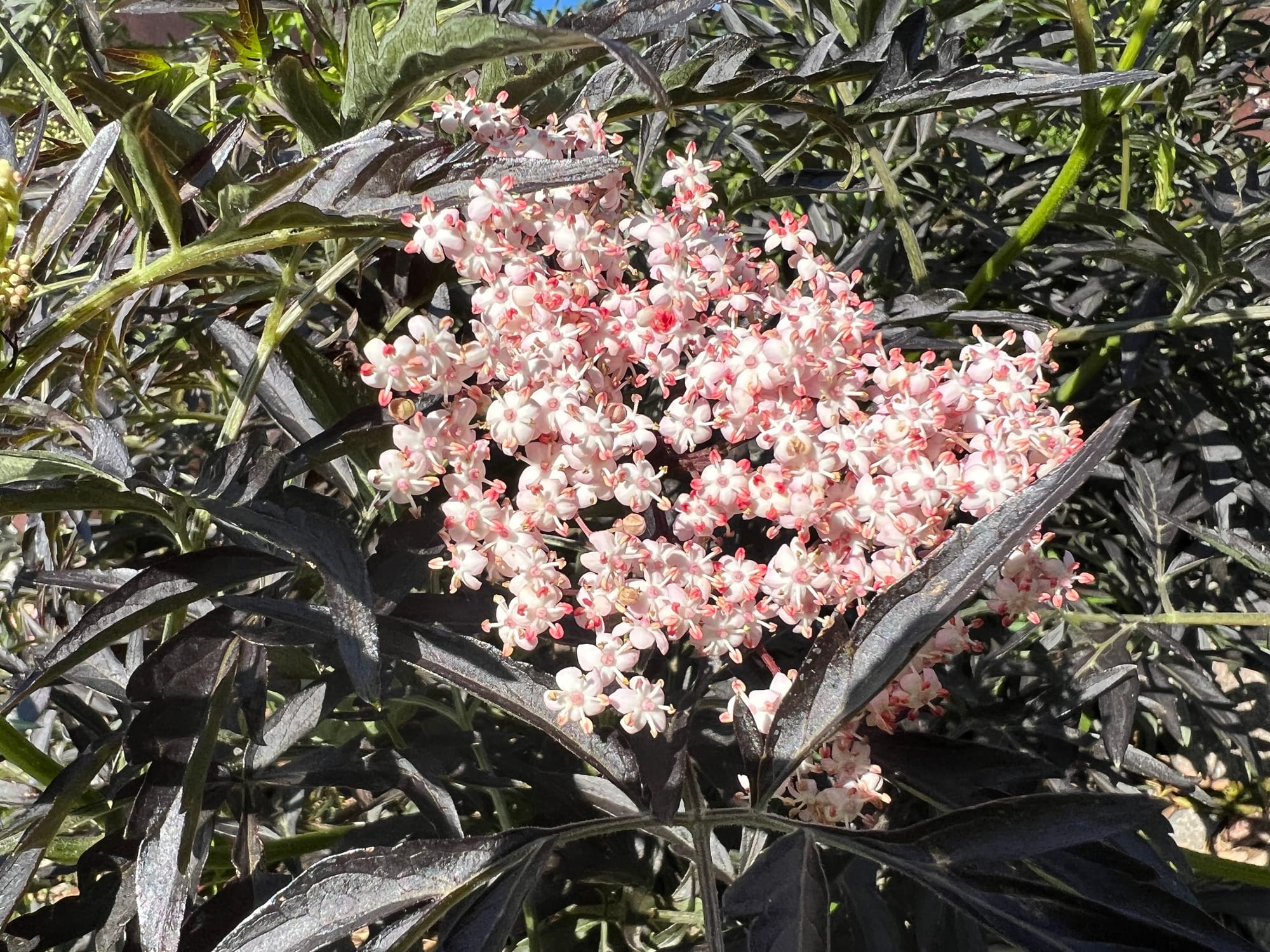
Royal Purple Smoke Bush/Tree (Zone 5-10) Cotinus coggygria' Royal Purple' is a shrub that can add that special touch to any garden. Here are five unique characteristics of the Royal Purple Smoke Bush/Tree:
- Unique Leaves: The Royal Purple Smoke Bush is another sub-shrub for my growing zone, but I recommend growing this beautiful plant due to its unique purplish-black leaf color and lacy leaves.
- Smokey plumes: Here again, similar to the Elderberries, it takes an entire season of growth for the flowers to establish, leading to the smokey plumes on a Smoke Bush. Those of you in zone 5 and above will enjoy the smokey plumes prevalent in the fall on this dramatic shrub/tree.
- Adaptable: The smoke bush/tree group is very adaptable to a wide range of soil types and can tolerate arid locations.
- Deer-resistant: I hesitate to say anything is deer-resistant because everything becomes fair game in harsh winters.
- Fast Growing: My sub-shrub, Royal Purple, grows 4-5' each season after completely dying back to the ground following winter. I suspect 12-15" per year is normal for those growing this variety in warmer climates.
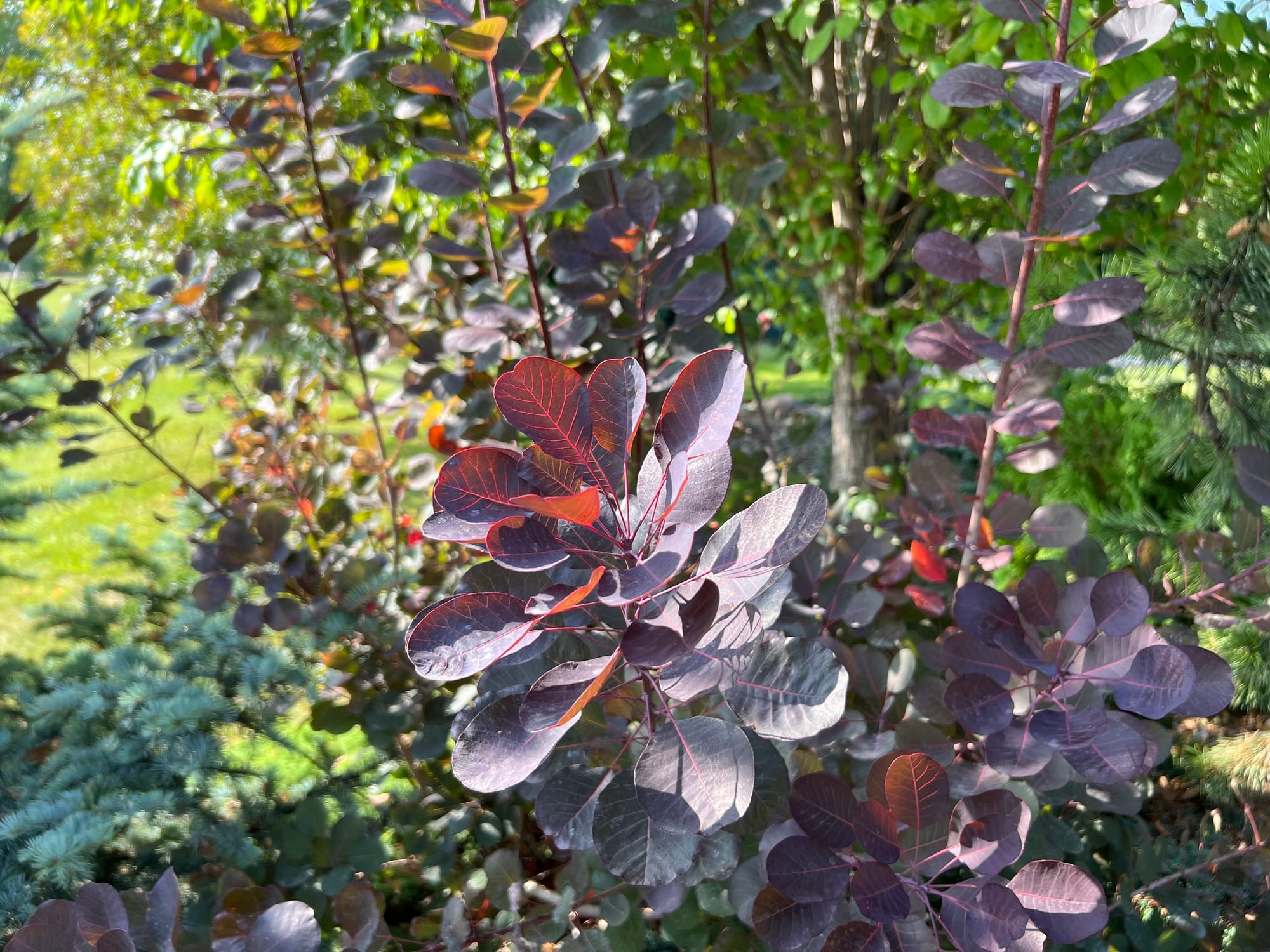
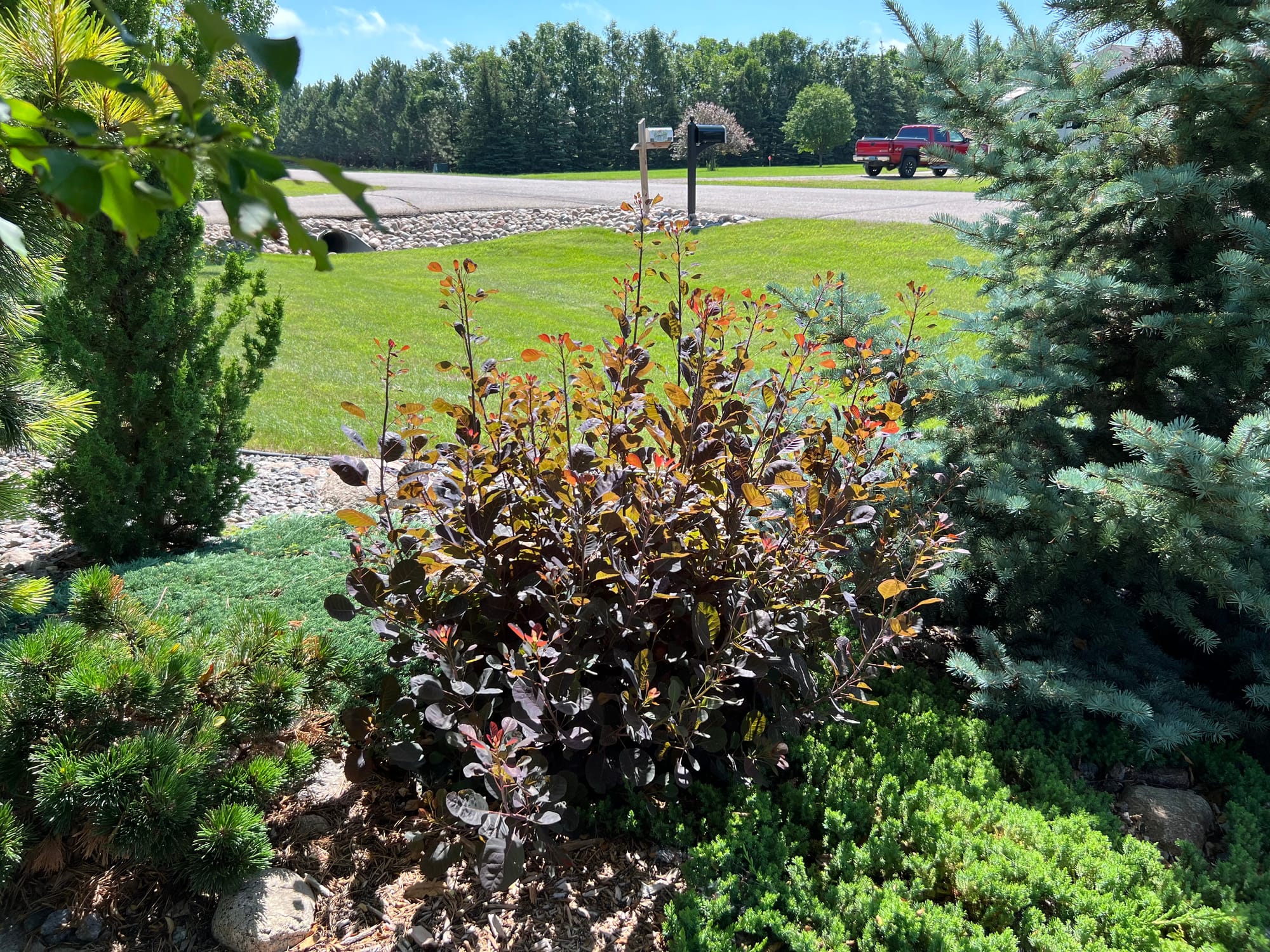
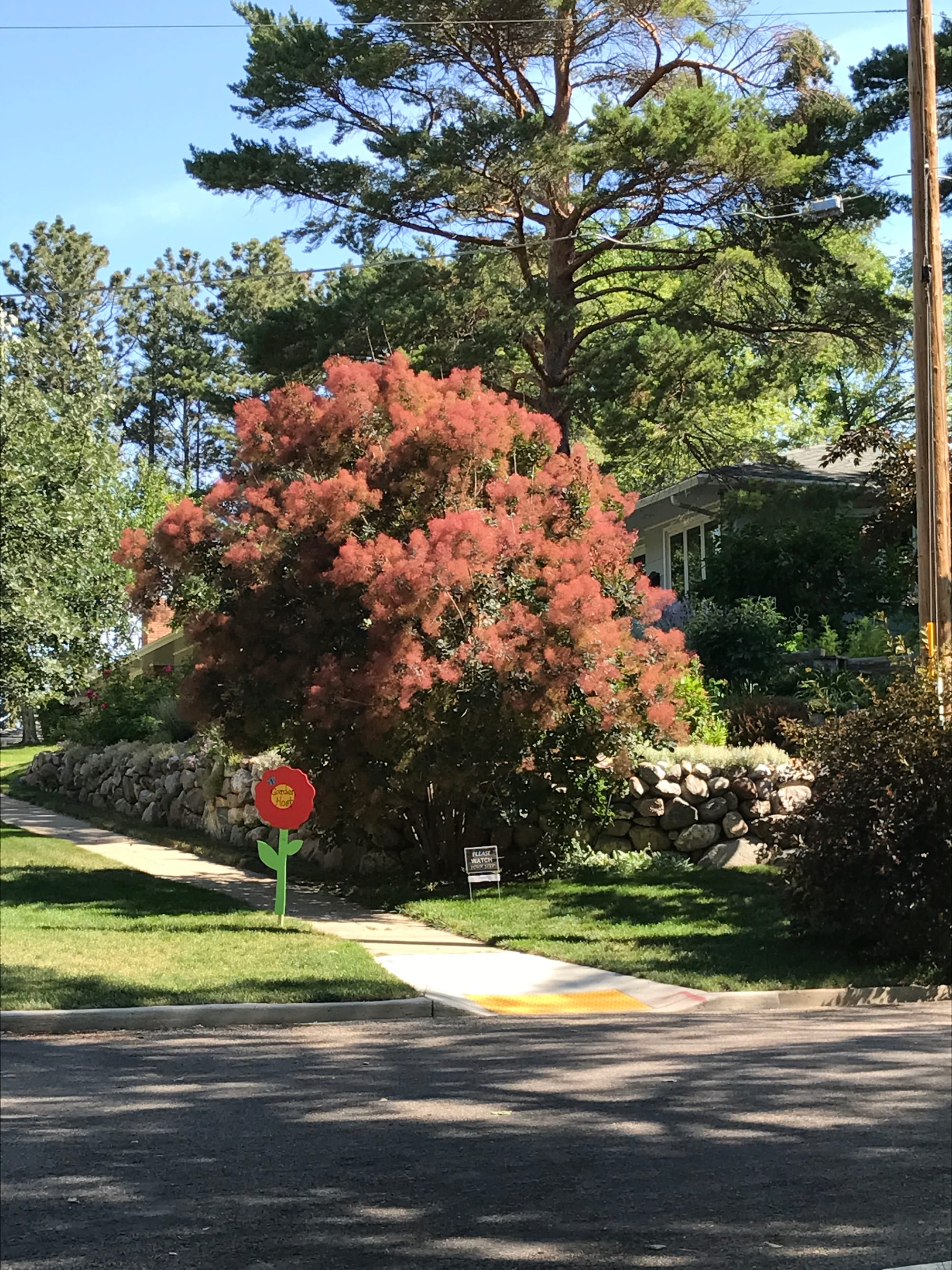
The Goji Berry (Zone 5-8) Lyceum barbarum is a shrub known for its fruits rich in antioxidants. But even if you do not harvest the fruits, it is a beautiful addition to your gardens. Listed as Zone 5, I have grown this in Zone 4 for many years.
- Fruits: Goji Berry has showy orange-red fruits mid-summer into fall, considered nutritious by most sources due to their high level of antioxidants. However, they are also high in less desirable lectins, so do your own research.
- Unique Shape: A long arching branch habit makes this shrub unique. Unfortunately, thorns are also a unique characteristic.
- Showy Flowers: As you can see from the photo below, the flowers are very showy, and often, you can enjoy flowering and fruits simultaneously.
- Suckers: It is worth noting that you will notice suckers coming up in areas you may not desire. I have cut-back suckers over 10 feet away from the parent plant (frequently!)
- Even though I like my Goji-Berry shrub, it would be the last on my list of shrubs to grow due to the suckering habit and thorns.
- Woodlands: Planting this on the edge of a natural woodland area, allowing it to naturalize, would be a perfect location.
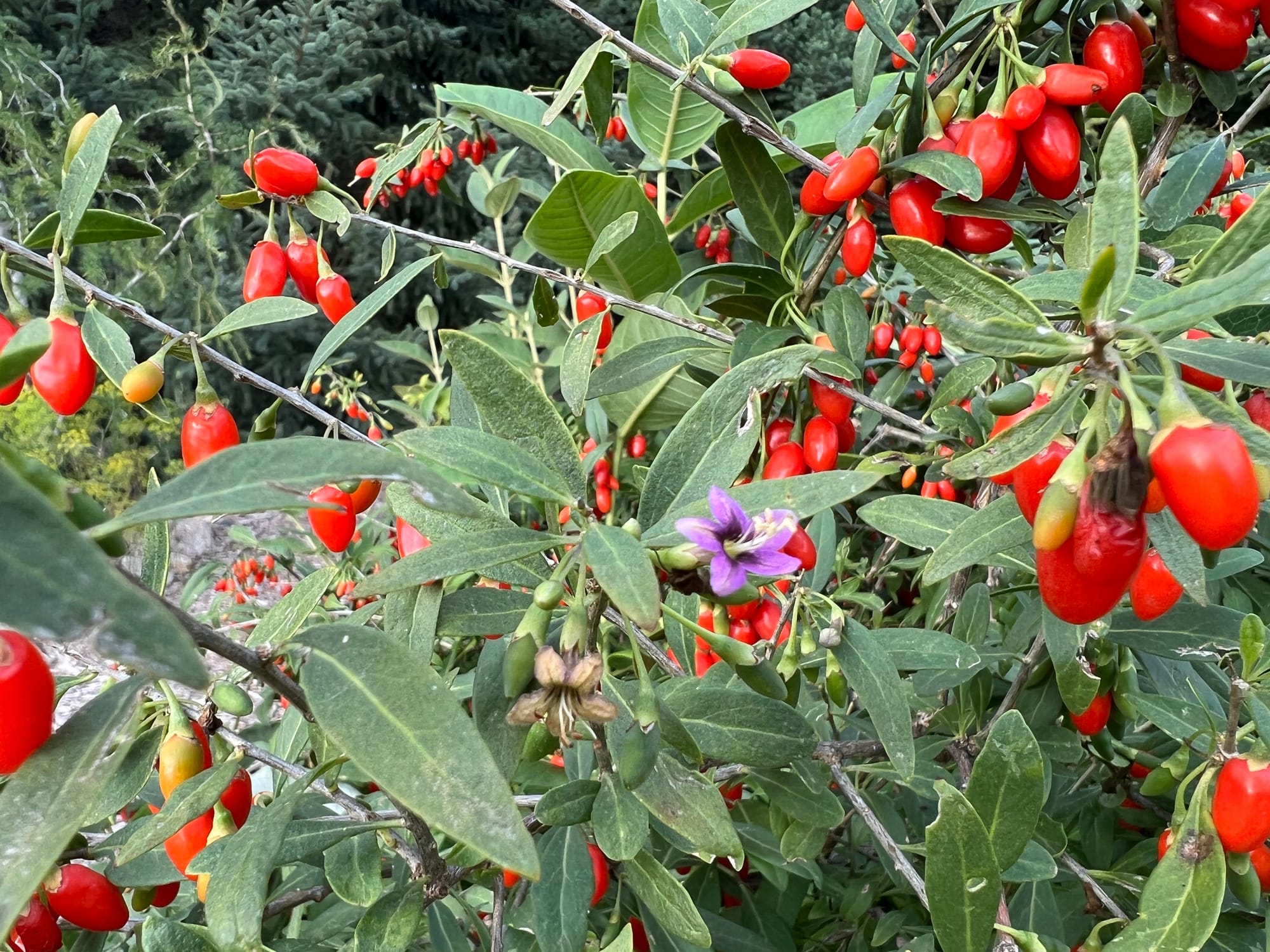
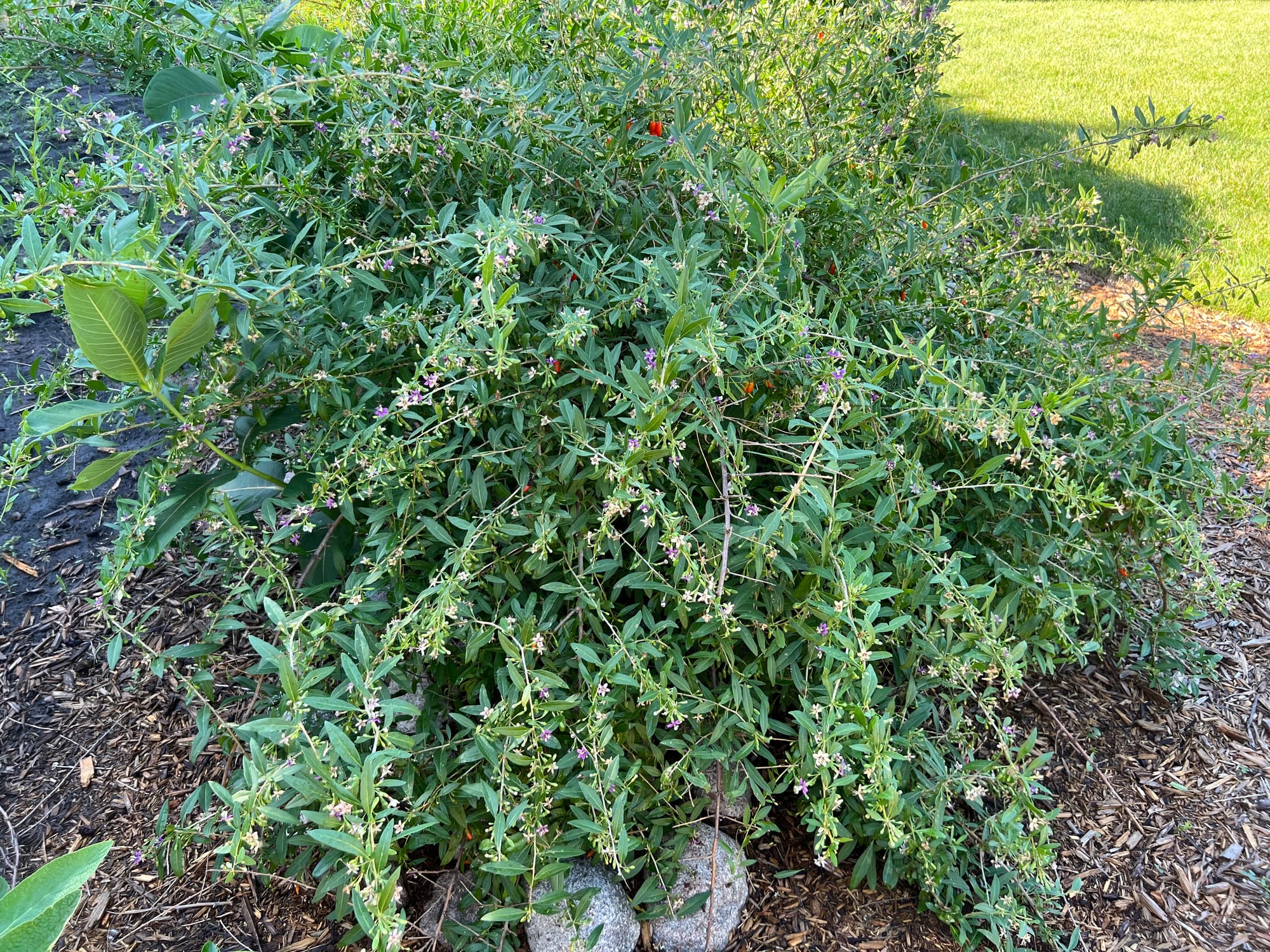
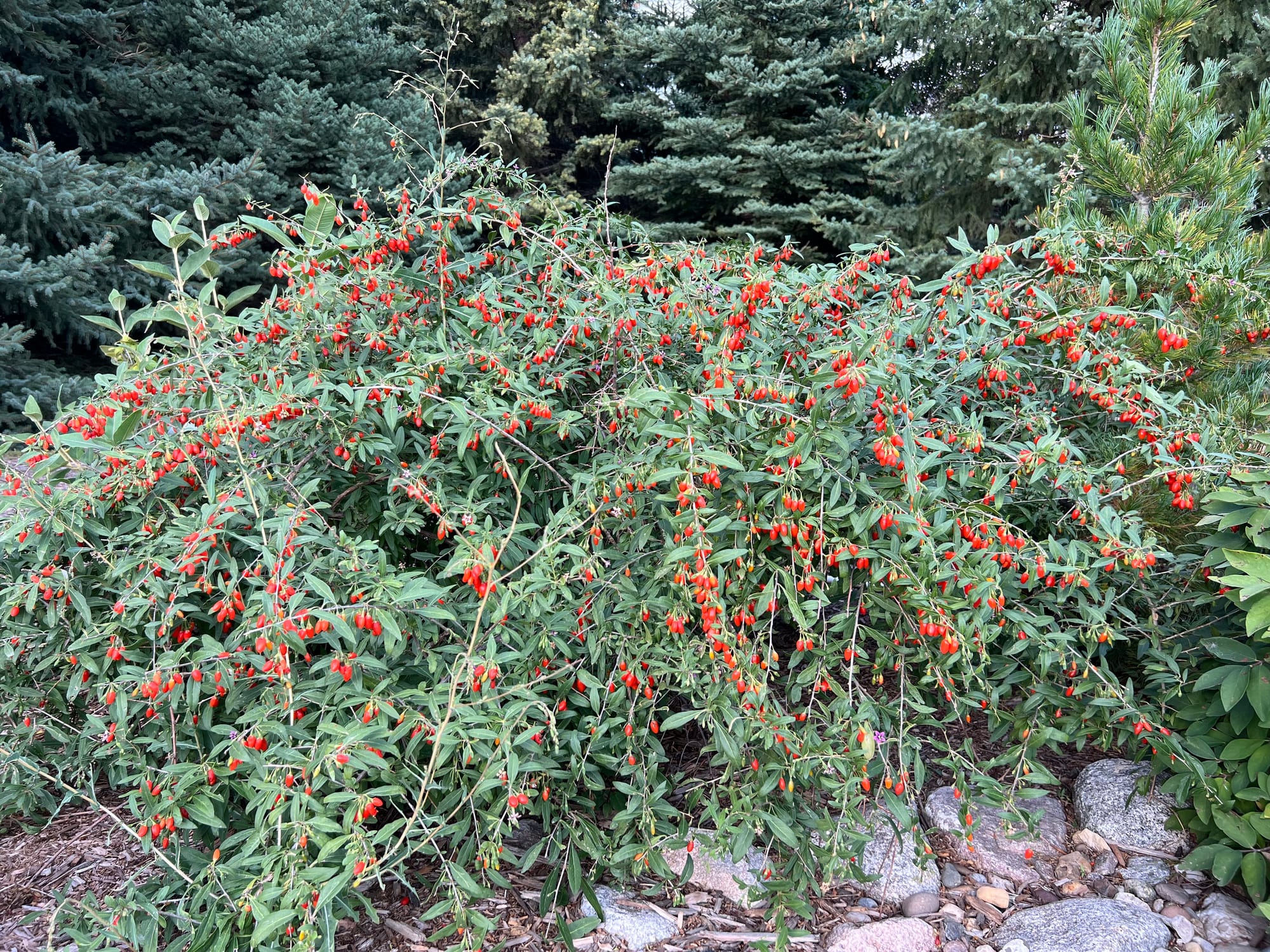
Thanks for stopping by Garden Hike! Enjoy the guided tour below.
Kevin
A.M. Leonard has an excellent selection of tools and gardening supplies! Enter discount code GARDENHIKE10 when checking out to receive 10% off any order. Click the banner below to enter their online store.

Garden Hike is supported by its audience. When you purchase through links on this site, we may earn a small commission at no additional charge to you.
